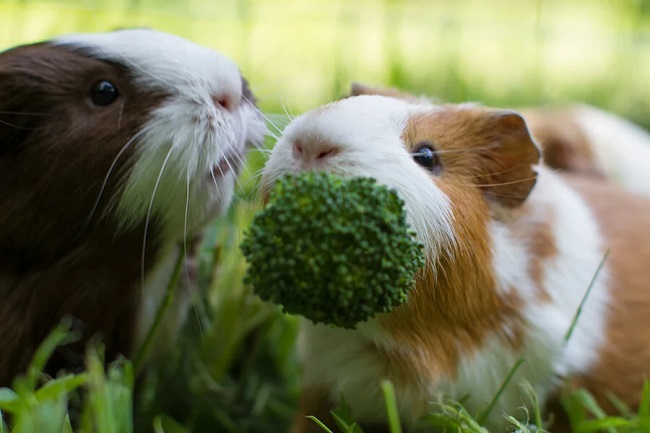Nurturing a healthy, happy guinea pig involves much more than simply providing them with a comfortable cage. A balanced diet is paramount, and vegetables play an integral part in it.
This article delves into the array of vegetables suitable for guinea pigs, highlighting their nutritional value and providing guidance on how to safely introduce them into your guinea pig’s diet.

The Role of Vegetables in a Guinea Pig’s Diet
While hay should form the backbone of a guinea pig’s diet, fresh vegetables provide the necessary vitamins and minerals to keep them healthy and vibrant. The key to feeding guinea pigs vegetables is variety, as different vegetables provide different nutrients.
Beneficial Vegetables for Guinea Pigs
Bell Peppers: Rich in vitamin C, bell peppers are a great choice for guinea pigs. You can offer any color of bell pepper, just remember to remove the seeds.
Carrots: Although high in sugar, carrots can be a tasty treat when given sparingly. They are packed with vitamins and the leafy tops are also safe for consumption.
Cucumbers: Mostly water, cucumbers are excellent for hydration but should be fed alongside more nutrient-dense vegetables.
Romaine Lettuce: Not all lettuce is created equal. Romaine lettuce is safe for guinea pigs, offering vitamin C and other nutrients, while iceberg lettuce should be avoided due to its low nutritional content and potential to cause digestive issues.
Parsley: This flavorful herb is packed with vitamin C but should be given in moderation due to its high calcium content.
Avoiding Harmful Vegetables
Certain vegetables like onions, garlic, and potatoes are harmful to guinea pigs and should never be included in their diet. Always research or consult a veterinarian before introducing a new vegetable to ensure it’s safe.
Introducing New Vegetables
When introducing new vegetables, do so gradually to avoid upsetting your guinea pig’s stomach. Start with small amounts and watch for any changes in their behavior or droppings.
Frequency and Portion Size
While vegetables are essential in a guinea pig’s diet, they should not replace hay and fortified pellets. Aim to provide a cup of mixed vegetables per day, and always provide fresh water and plenty of hay.
Understanding Your Guinea Pig’s Nutritional Needs
Guinea pigs, much like humans, are unable to produce their own vitamin C. This makes it crucial to supplement their diet with vitamin C-rich vegetables. Bell peppers, broccoli, and parsley are all excellent sources of this essential nutrient.
Insufficient vitamin C can lead to scurvy, a disease that can cause a host of problems including lethargy, weight loss, and joint pain.
The Importance of Fiber
Fiber is also a vital part of a guinea pig’s diet. High-fiber vegetables like celery and leafy greens can aid in digestion and help prevent obesity, a common problem in domestic guinea pigs. However, remember to remove any strings from the celery to prevent choking hazards.
Caution with High Calcium Vegetables
While calcium is important for bone health, excessive calcium can lead to bladder stones in guinea pigs. Vegetables like spinach and kale are high in calcium and should be given sparingly. It is important to strike a balance between providing necessary nutrients and avoiding potential health issues.
Hydration and Vegetables
Some vegetables, like cucumbers and zucchinis, are high in water content. These can help keep your guinea pig hydrated, especially during hot weather. However, they should be paired with other nutrient-rich vegetables to ensure a balanced diet.
Conclusion
Incorporating a variety of vegetables into your guinea pig’s diet is crucial for providing the necessary nutrients for their well-being.
However, remember that not all vegetables are safe, and any new foods should be introduced slowly.
Always strive for balance and variety in your guinea pig’s diet to promote their overall health and longevity.
























